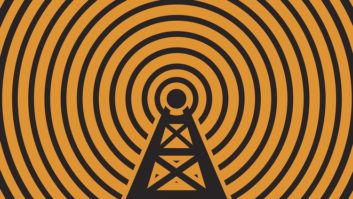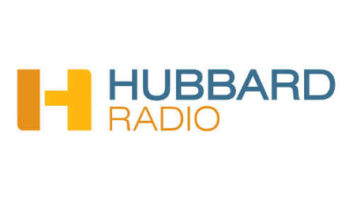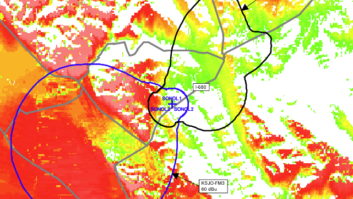I’ve filed a proposal with the FCC about translators and interference. What follows are my ideas and the reasons behind them.
I offer this in the public interest based on my experiences as a former station owner, one-time operations manager of UPI Radio, political observer, broadcast consultant, lifelong devoted listener and close observer of the radio industry.
If you are a regular reader of Radio World, chances are overwhelming that the issue of translators and interference touches you. Whether you own or work at an FM station that could get interference from a translator, or have an AM station that could establish or expand a translator — or you have both situations in your portfolio — this matters.
There are two NPRMs in front of the commission: RM-11786 and RM-11787. In different ways, both propose changes to the present system of complete protection (at any distance or contour) of FM stations from translator interference.
FCC rules for translators are unique. Other licensees are protected within certain coverage areas or signal level contours. Specifics vary with the class of license, but each station has a particular and explicit level of protection it must provide to others. In most cases, if you follow these rules, you cannot be accused of interfering, unless it occurs inside someone’s protected contour.
But a translator may be required to change facilities or shut down if a station can show that a translator adversely affects any listening. If you live on a hill and have an antenna to pull in a station 100 miles away, you have no legal complaint if a new, closer station is built and makes such reception impossible; if a translator pops up, your complaint could force it off the air.
These rules are not without problems. Because a translator may be displaced so easily, it is possible to establish and license a translator in a place where it, ultimately, will not be allowed to operate. Additionally, abuses are possible when distant stations quash translators entirely outside areas they are attempting to serve. This also leaves a lot of room for expensive legal battles and adversarial hearings.

These are the 60, 50 and 40 dBµ contours of WLML. The most extreme proposals would protect them only inside the red inner circle, even though they are a popular local station in Delray Beach and Boca Raton. Used with permission from Radio-Locator.com.
DUELING IDEAS
RM-11786, the Aztec Media proposal, would entirely remove any protection for FM stations outside of their standard “interference-free” contours. For example, in maps on the popular radio-locator.com website, that is the inner contour for most stations. (Class B commercial stations are protected to their 54 dBµ contour and Class B1s to 57 dBµ.) Check some stations you know. If someone put a translator on the same frequency nearby but outside the 60 dBµ, it could obliterate a substantial part of the station’s coverage.
This is particularly dangerous.
RM-11787, a proposal from the National Association of Broadcasters, is somewhat better. It allows stations to object to translators, but sets a high threshold of proof and level of detailed complaints needed to force remediation.
For large stations with significant consulting and legal resources, it would still be relatively easy to take out an interfering translator or defend their own against such complaints, but either could be very difficult for smaller broadcasters.
Essentially, it makes sense to provide more certainty of operation for translators. It is also important not to cause stations coverage reductions that would disappoint their listeners and hurt their business.
Thus, as often happens, the FCC is faced with a classic dilemma. Frequently misused, the word is a synonym not merely for a problem but specifically the type of problem in which there are competing, mutually exclusive, valuable ideas.
Comments on these NPRMs reflect this dichotomy. Most advocate solutions that almost entirely protect the interests of either FM stations or translator operators, depending on the commenter’s perspective. But in the best interest of the public and the industry, we should seek to do both.
WHERE TO START?
One point of nearly universal agreement is the NAB’s proposal that translators be allowed to move to any available frequency as a minor change for the mitigation of interference.
Many observe that frequency changes typically help both parties and thus should be made easier and more flexible. This is true.
Some have suggested that one side or the other helps bring particular value to communities, but this has a couple of problems. The first is that either the FM station or the interfering translator may present content that is unique, more useful to an under-served minority or more local. This will vary widely; often compelling cases can be made on both sides.
In the Philadelphia case brought by Aztec, though the Hispanic community may be underserved, it is also true that WVLT is the only commercial station in the region with any significant music content with large appeal for an age 55+ audience. Both stations are involved in the community and have notable amounts of local programming.
Additionally, the First Amendment precludes most forms of regulation based on programming, yet prioritizing one side over the other for these reasons ultimately is a comparison of content.
One way to provide both translator stability and station-interference protection is to establish a time limit for interference complaints outside of protected contours. This would protect “heritage” stations that have been popular in large areas, while preventing stations that had never found reason to complain from subsequently jeopardizing translators that may have become important to their communities and critical to the ongoing business operations of their parent stations.
Additionally, it would reduce the instances of adversarial proceedings that take up significant FCC resources. At minimum, if nothing else is changed, this should be done.
At first glance, you may wonder why the standard protected contour is not the appropriate limit for protection by translators, as Aztec Media has proposed.
Keep in mind that stations in the commercial FM band are spaced by class and distance. These requirements often create de facto protection outside of an official interference-free contour. For example, having local second-adjacent stations on each side of one’s frequency often precludes most interference.
Uniquely, translators are agile in the sense of where they can be placed. By having power levels as low as a few watts and the ability to license highly directional antennas, they can skirt the protected zone closely without touching it. For these reasons, we can use signal thresholds in translator interference rules, but they cannot be the same ones used for other purposes.
With a translator window opening in July for AM stations, demand for translators will be great. Compounding the situation is the new rule that allows these translators up to 25 miles away.
As former station owner of a suburban AM, I remember hearing a translator and fantasizing 30 years ago: “If I could just have 5 watts on FM downtown, it would be worth more by far than my whole station.” This seemed a flight of fancy, but now it’s real — and everyone is seeking a spot on the dial. Look at your coverage map and imagine a new signal completely eliminating your station in a population center just outside that inner circle. It could happen if we don’t get these rules right.
On the other side of this coin, if you have an AM station and you get an FM translator, or you are deciding whether to pursue such an improvement, vagueness hangs over your FM signal like the sword of Damocles. Any station, no matter how distant or weak in your location, could allege that you are interfering, and you might lose the translator or have it forced to change facilities in a way that would render it useless.
This discourages investment and never quite allows your FM to be truly on a solid footing. Therefore, change is needed.
PROPOSAL
Thus, my proposal combines a time-limit and contour-based system.
● It is reasonable to say that no station has a rational basis for an interference complaint outside its predicted 40 dBµ contour, so we should disallow these as a basis for limiting the service of translators.
● 50 dBµ seems to be the typical threshold of the “scan” function on most car radios and is roughly the minimum strength needed for comfortable in-car listening. For this reason, translator interference complaints outside the 50 dBµ, but inside the 40 dBµ should be considered under the strict standard of scrutiny that the NAB proposes for all such complaints.
● Between the 50 dBµ and the protected contour, the present standard of “no interference” should remain.
● Translator interference complaints outside the protected contour should not be allowed if the translator has been continuously operating for at least 120 days (or within a window when the rule is first made).
● Adopt the NAB proposal to allow frequency moves as minor changes in interference cases.
Such a set of rules, though complex at first glance, ultimately would balance the legitimate interests of public service, FM licensees and translator operators while reducing the number of interference complaints requiring adjudication.
I urge you to read my filing: www.fcc.gov/ecfs/filing/1052607365892.












